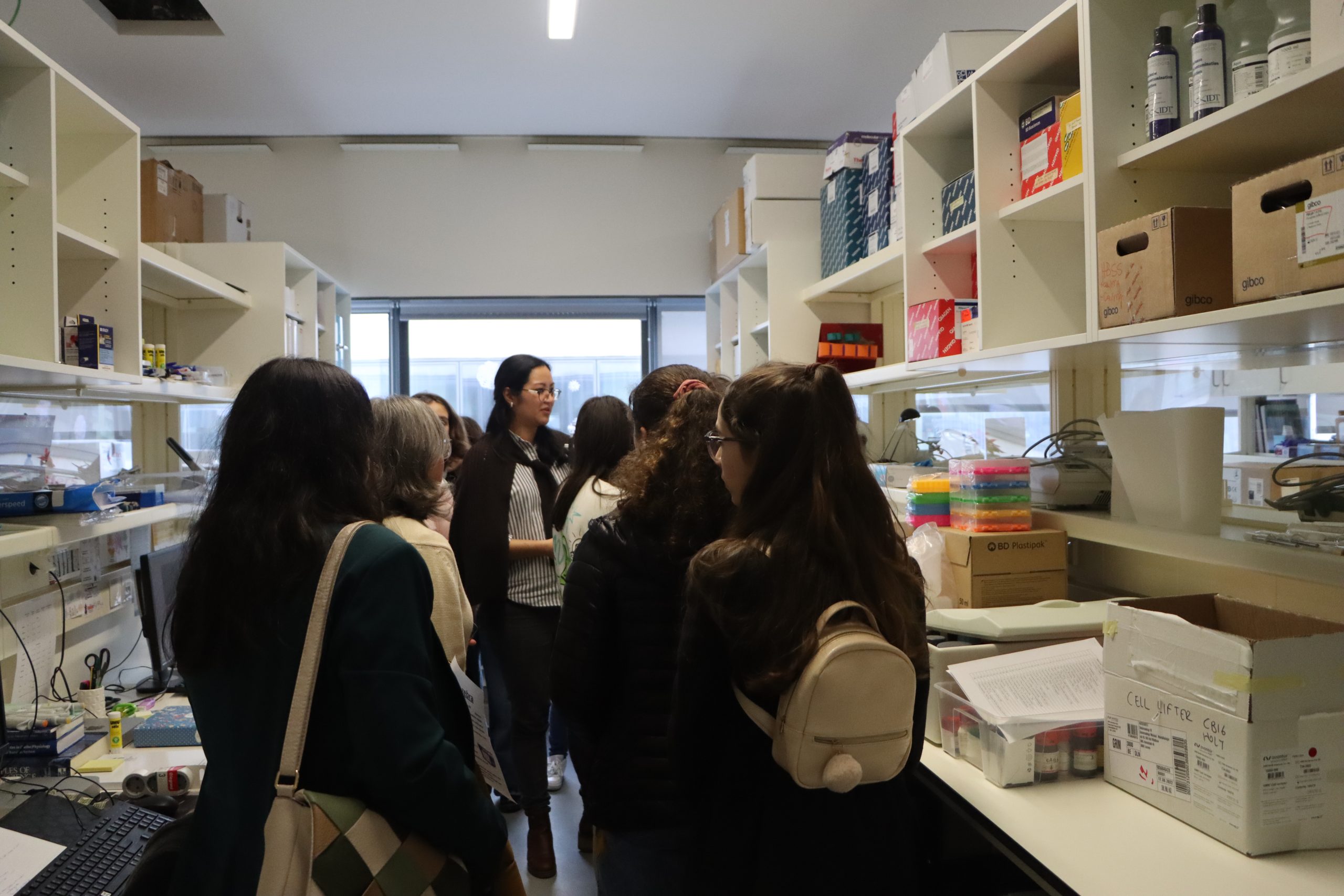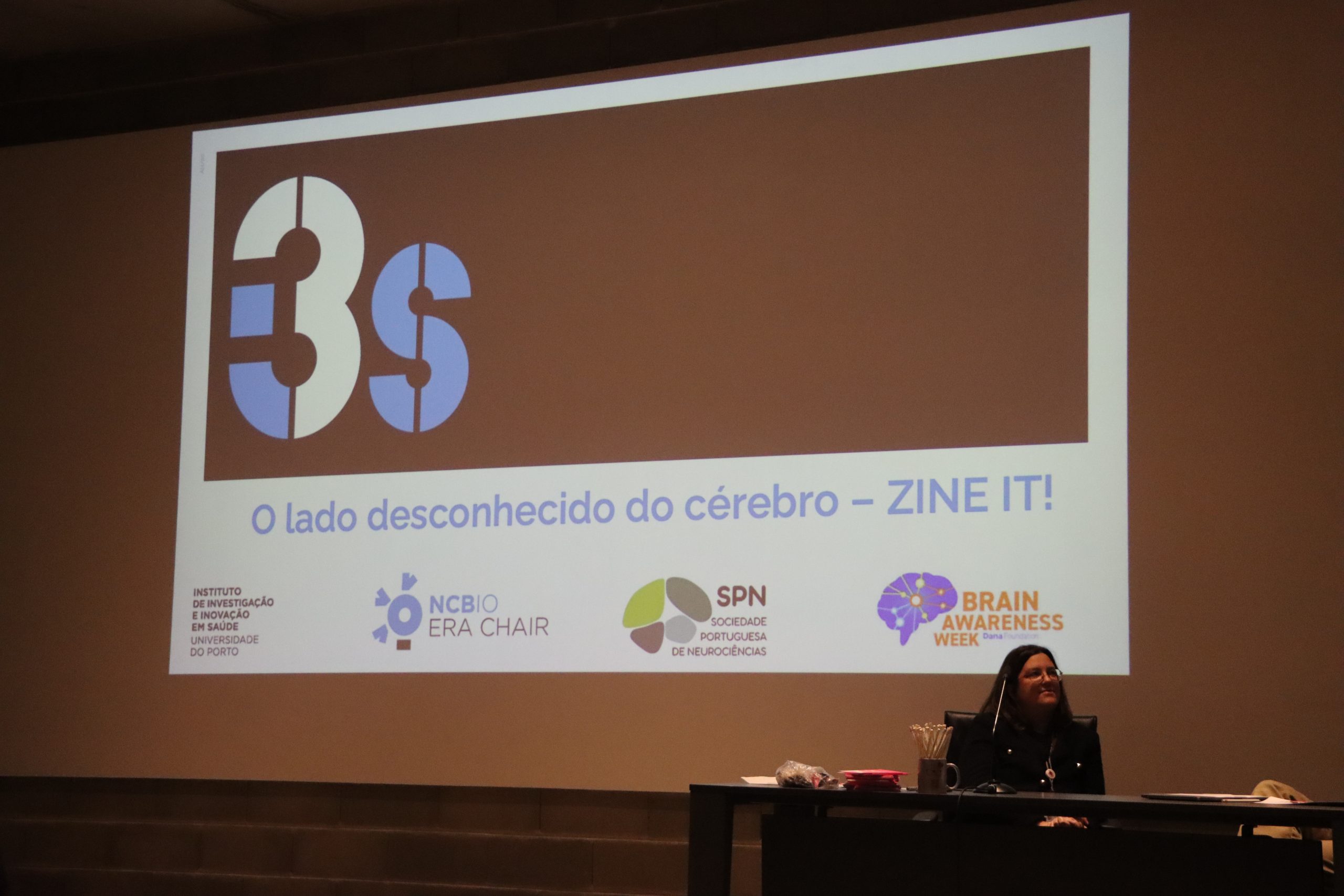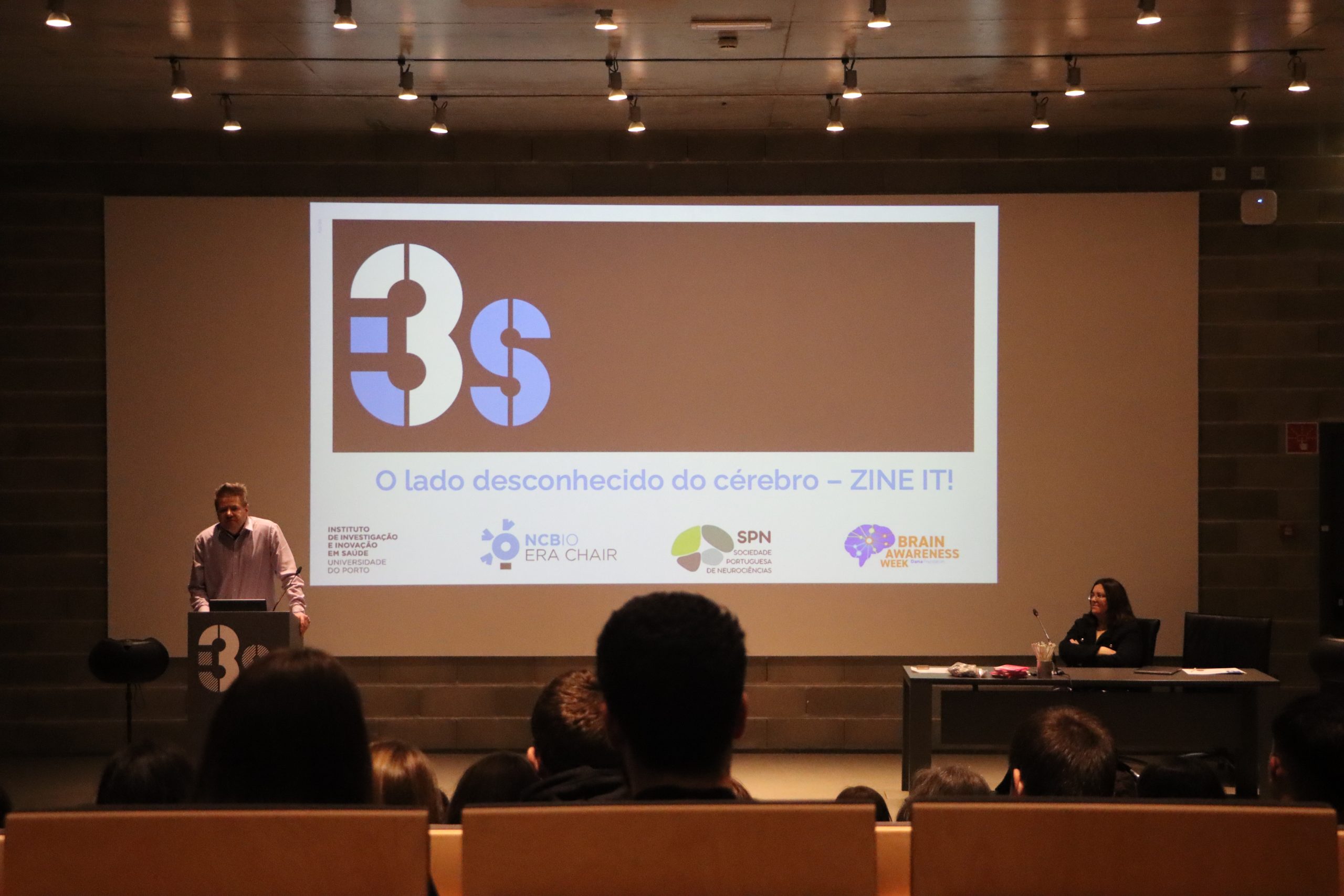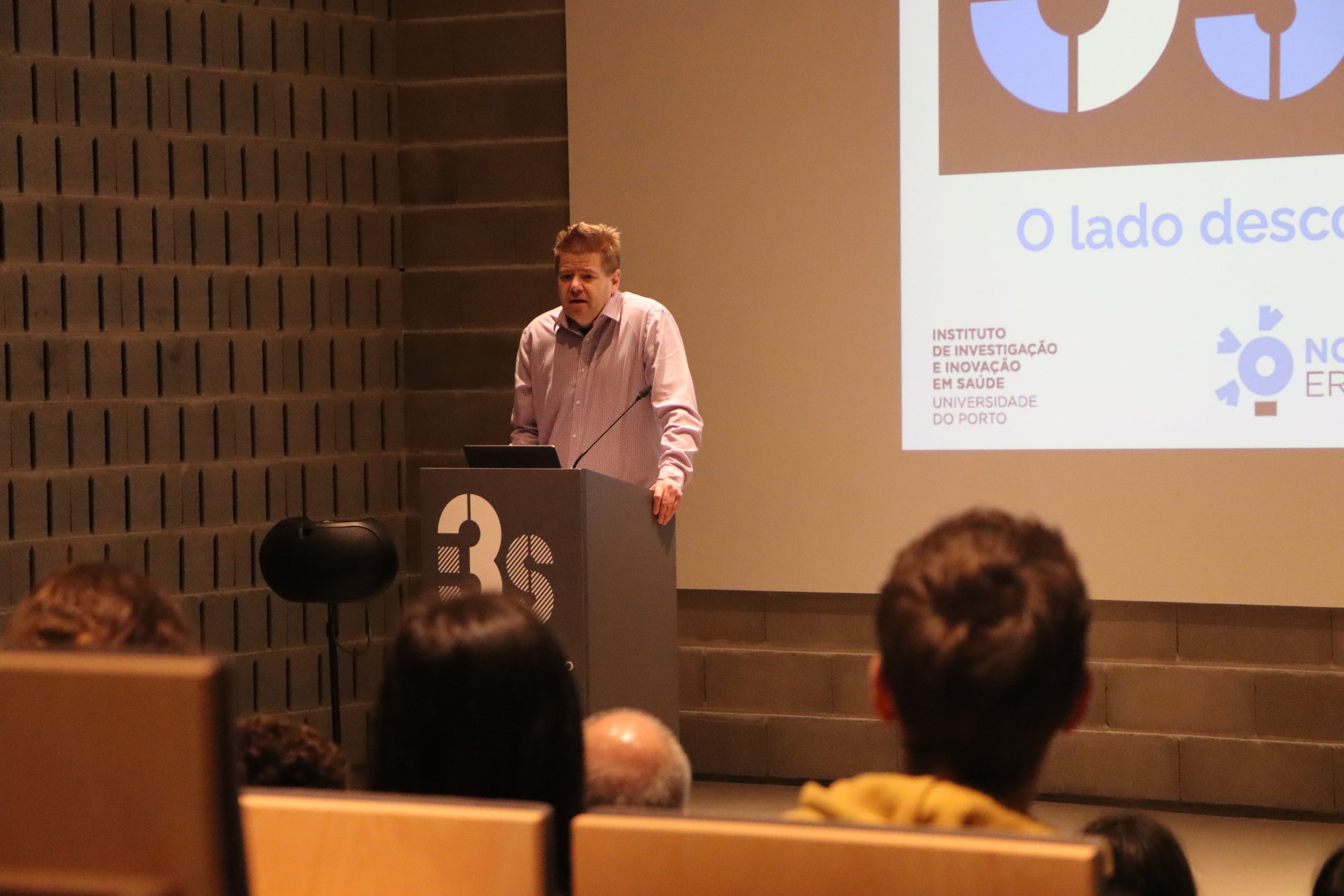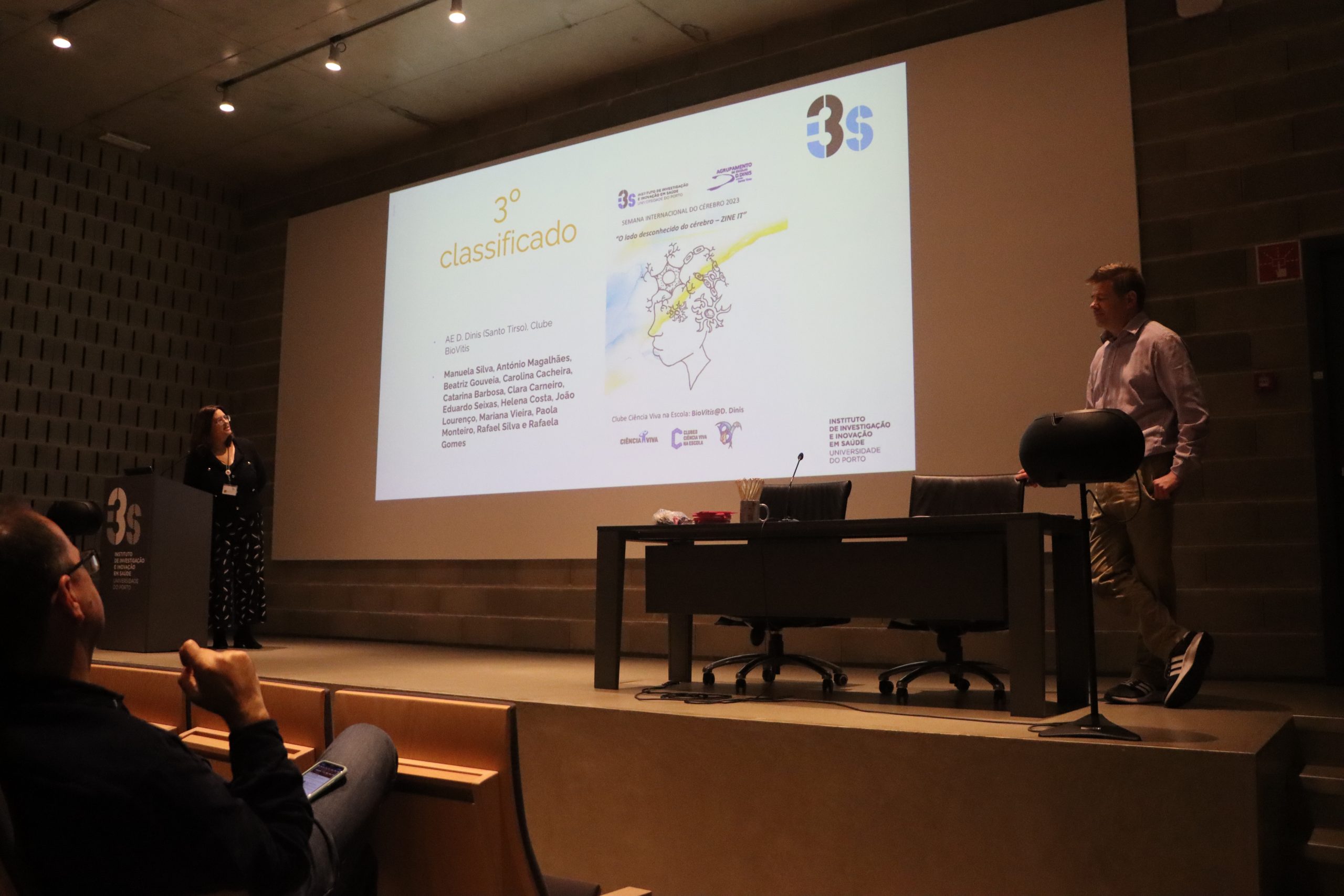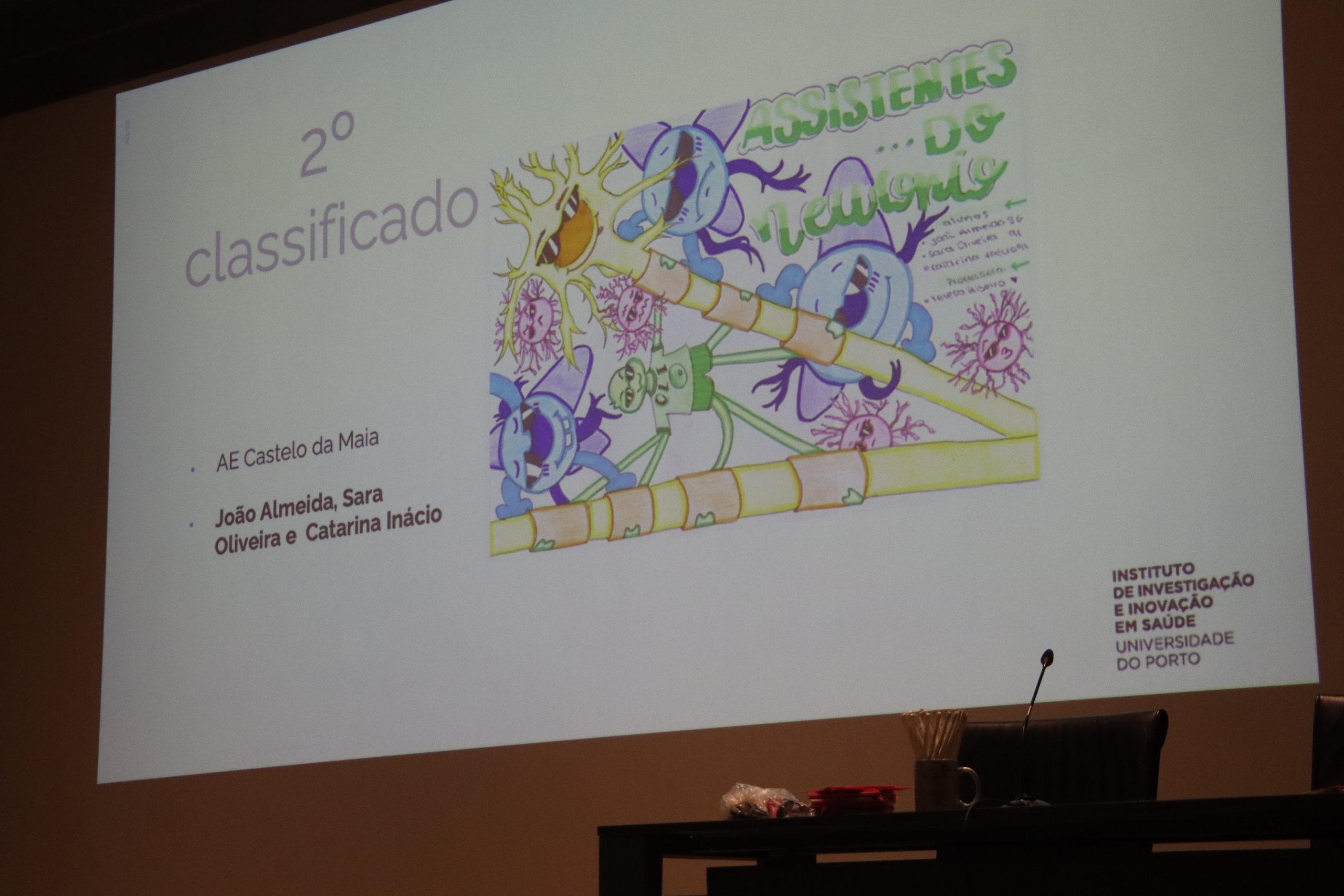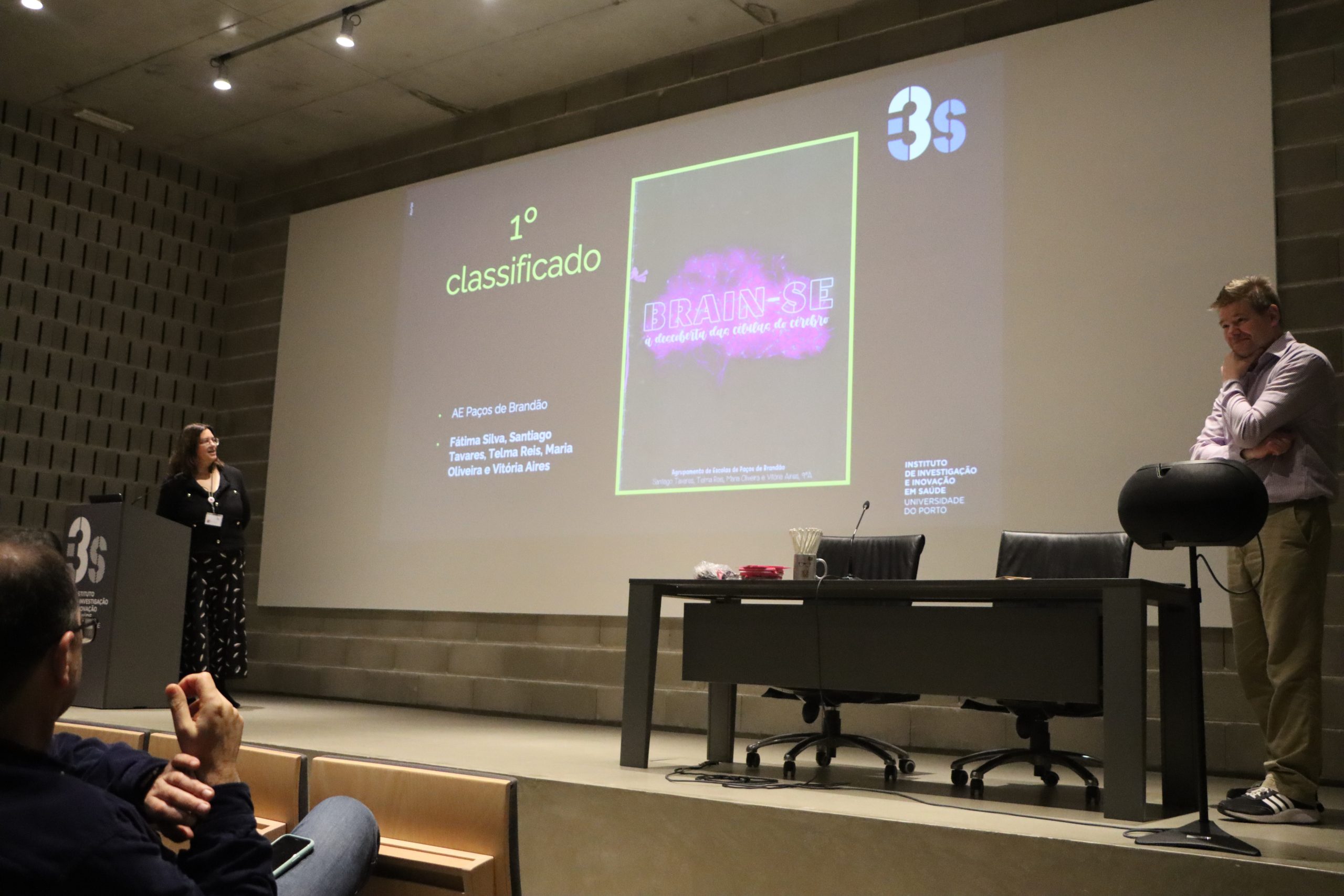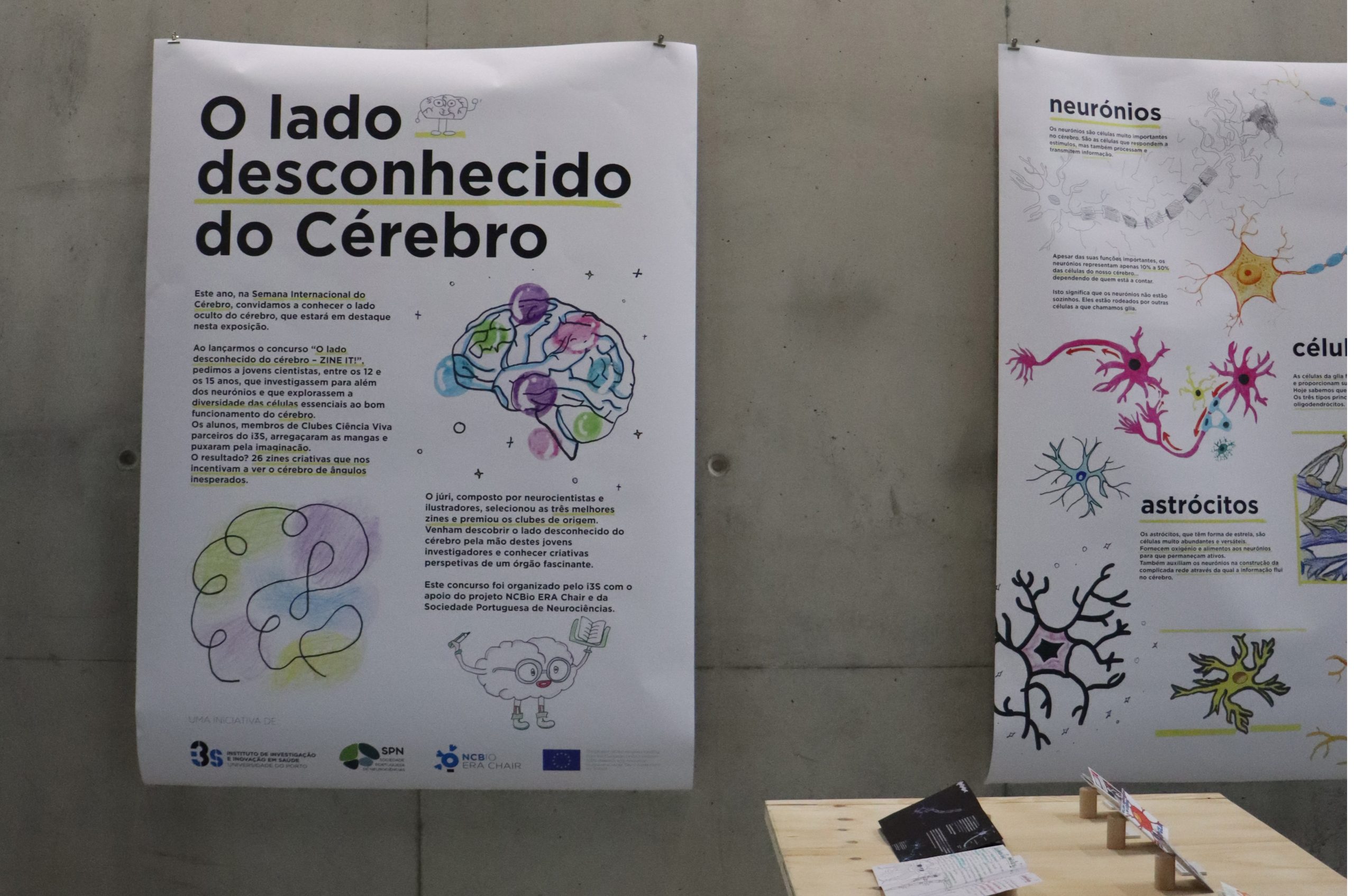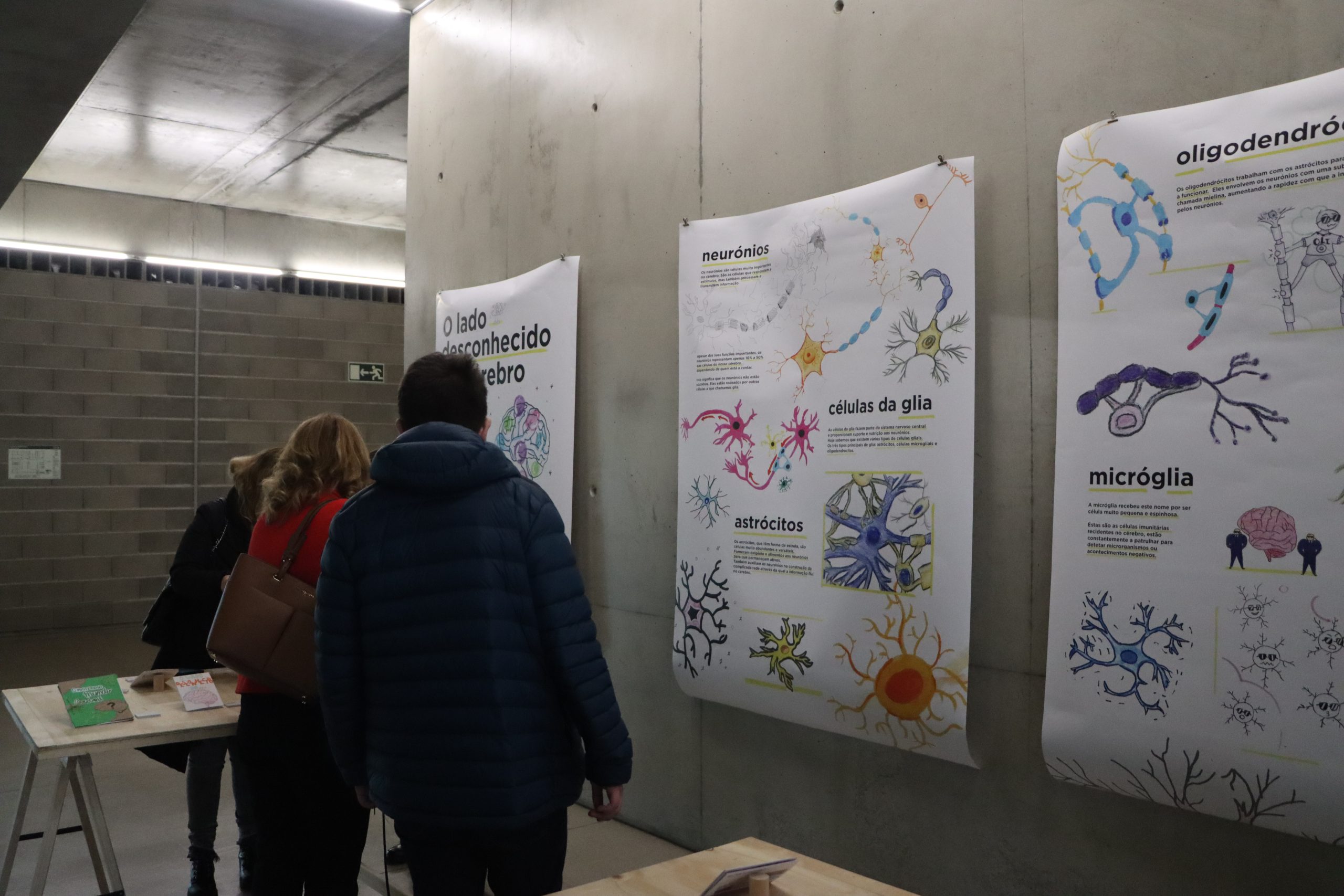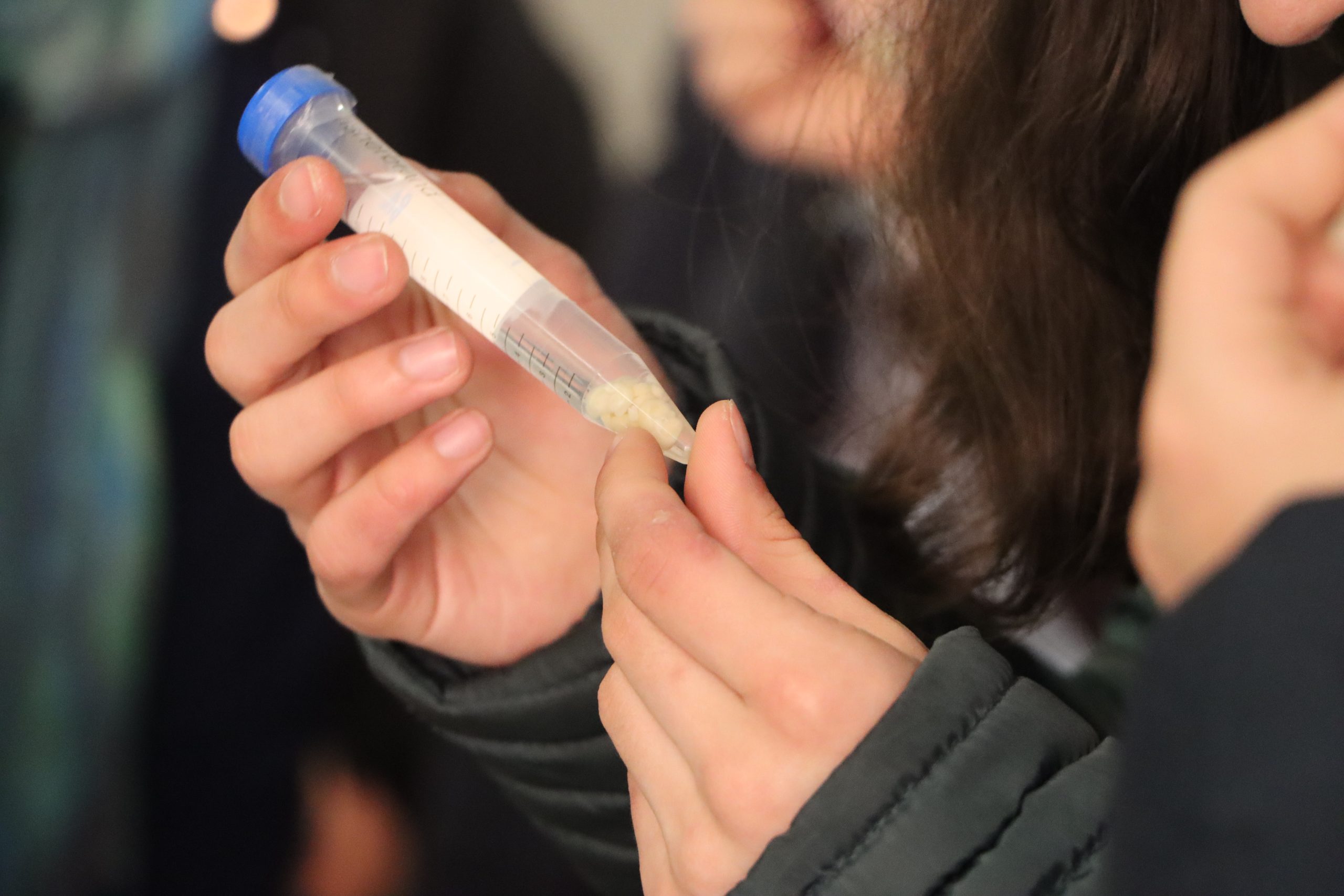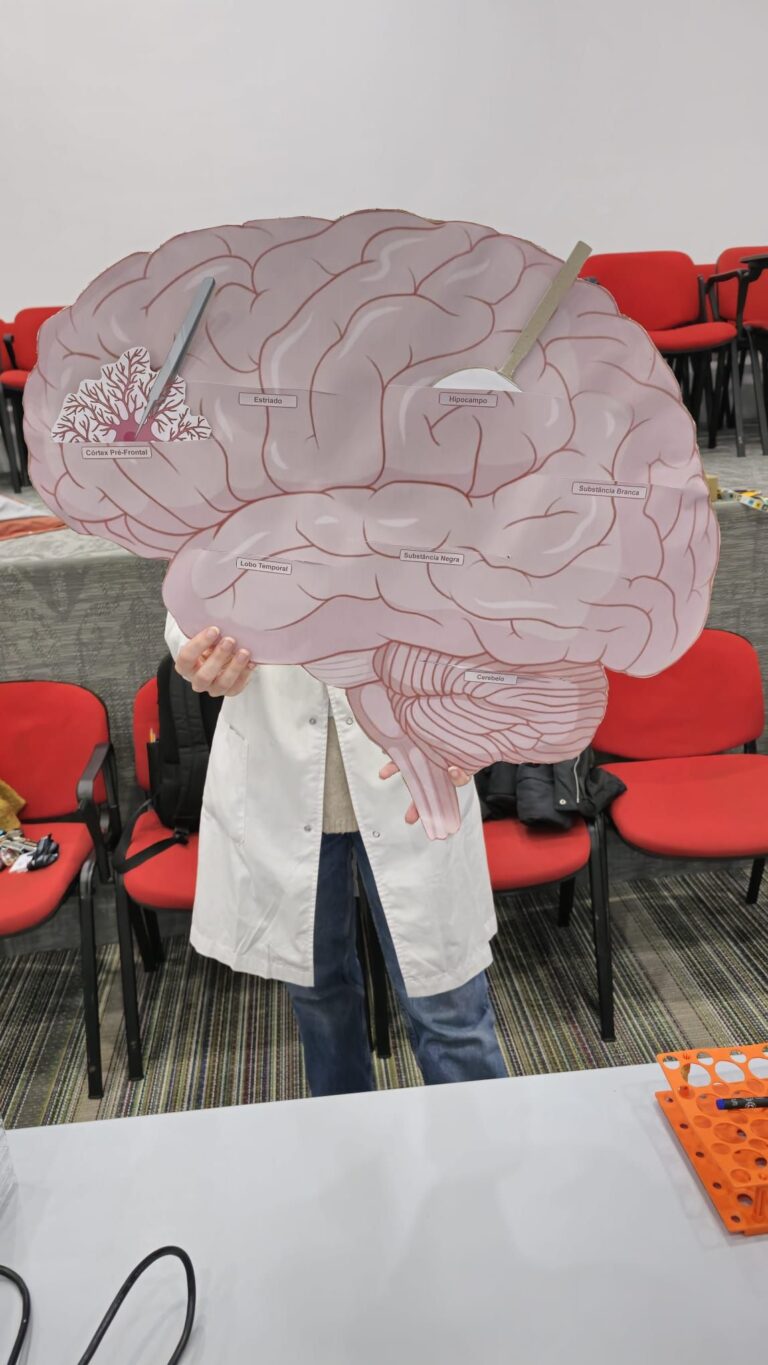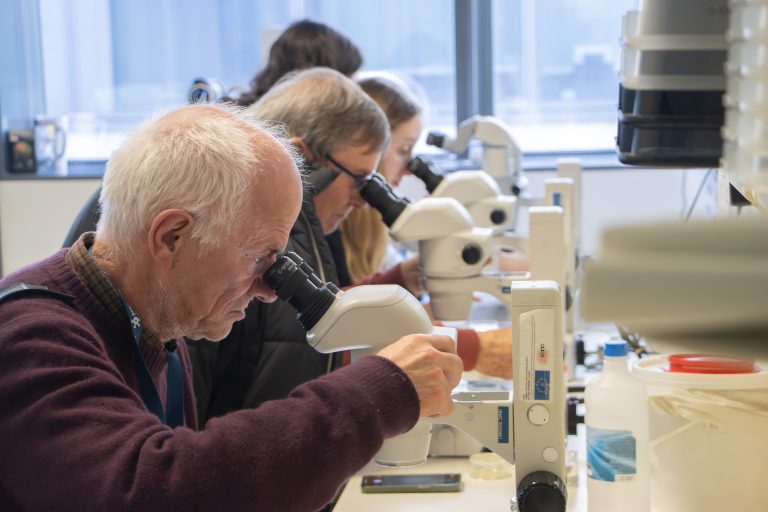To celebrate Brain Awareness Week, Dr. Matthew Holt challenged the Ciência Viva Science Clubs and 7th, 8th and 9th graders to become neuroscientists and discover the unknown side of the brain.
Most people and students know general questions about the brain and its functioning. And the stars in the teaching are the neurons, the nerve cells with peculiar shapes that connect to each other to pass nerve impulses. What few people know is that more than half of our brain is made up of other types of cells, until recently neglected in research. Together they are called “glia,” which is derived from the Latin “glue” because these cells were initially thought to serve only to hold neurons together in place. Today we know that glia cells are diverse and have very different functions, such as providing oxygen and food to neurons; acting as insulation to make the flow of the nerve impulse more efficient; and even performing immune functions in the brain. It is this unknown part of the brain that i3S has taken as the motto for the celebrations of the International Week of the Brain.
The goal of the contest, explains Matthew Holt, is “to highlight the diversity of cells in the brain. In addition to neurons, we want other brain cells to be “discovered” by students. To do this, he adds, “the i3S Communication Unit provided several resources for exploration and we proposed that the students use their imagination and present what they have learned in a ZINE (mini magazine)”.
The various zines were presented during a public session held at i3S on March 13, and a winner was announced. During the day students also learned about the neuroscience performed at the i3S, from the visualization of various types of cells that make up the nervous system and brains of different animal models, to the importance of animal welfare to ensure the reliability of experimental results. The students also interacted with i3S researchers who showed them how motor behavior in worms, flies and mice can be affected by specific changes in the nervous system.


